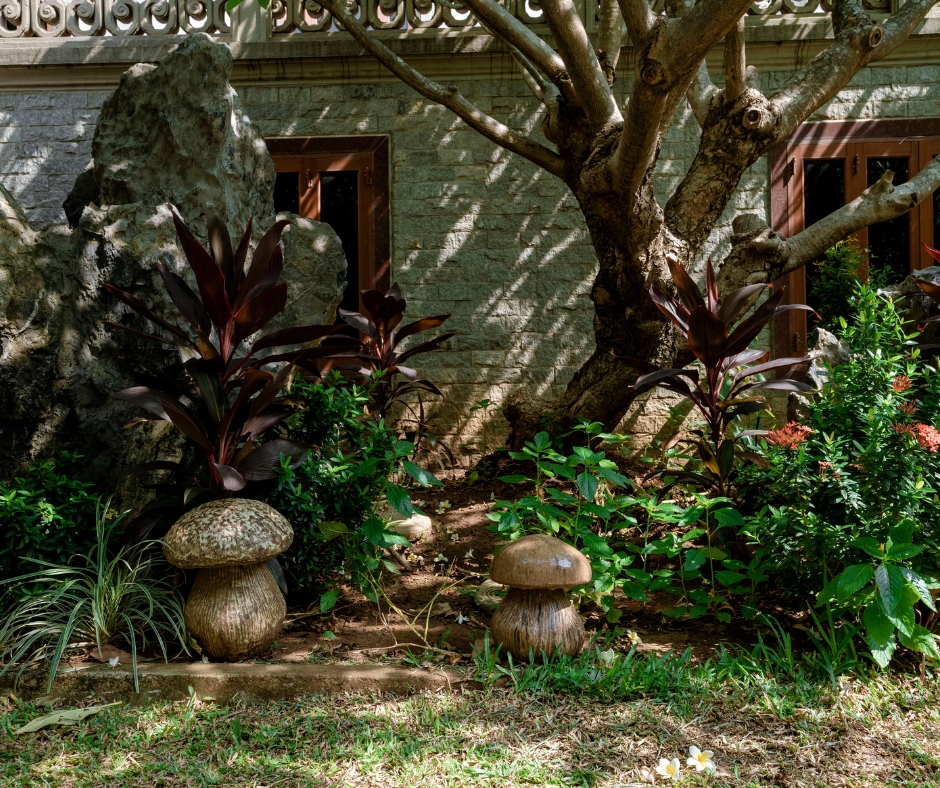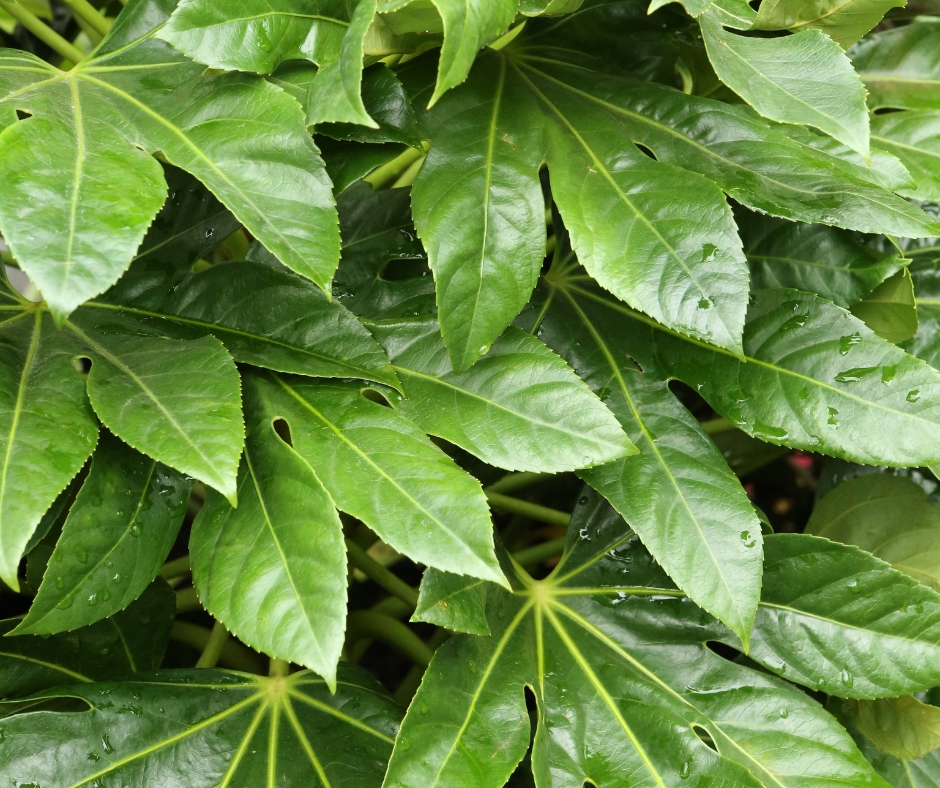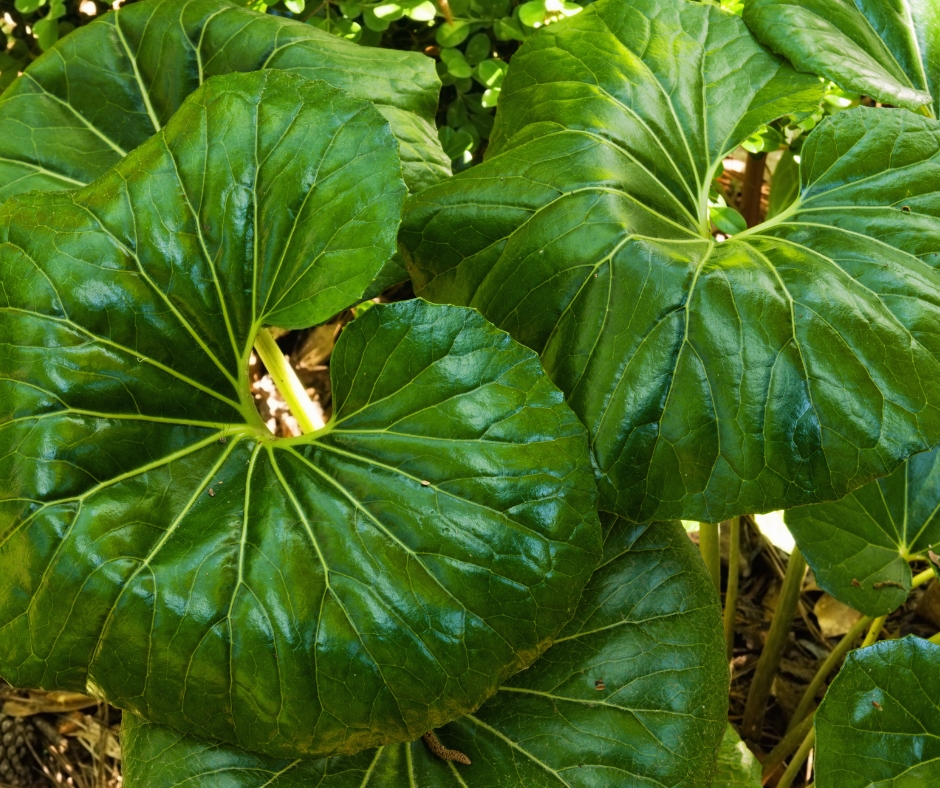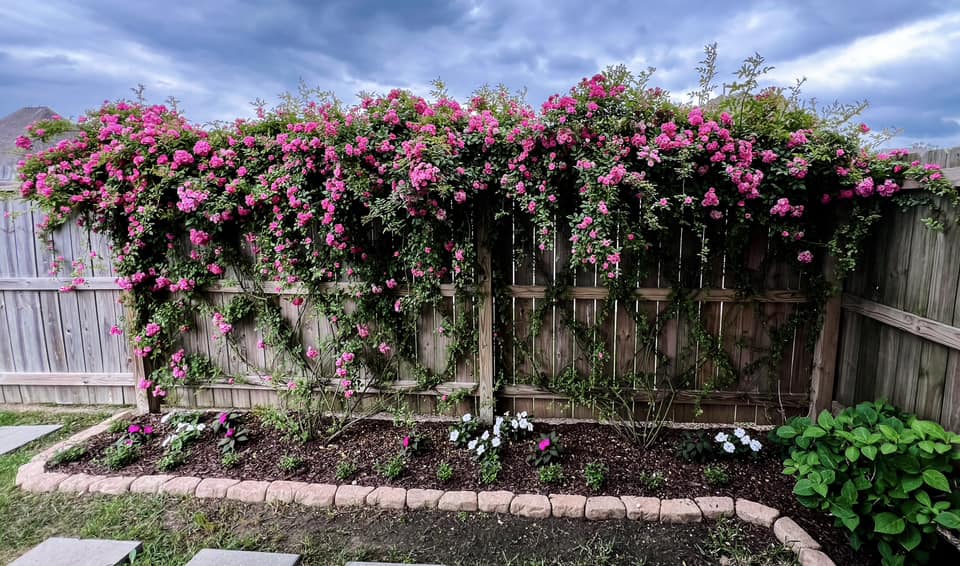Shade Gardens Can Be Just As Beautiful As Any Full-Sun Bed!

We all have our favorite spots in our home’s landscape: it tends to have lots of sun – perfect for easy-to-grow, show-stopping flowers and blooming shrubs. We take extra care in these beds because the whole neighborhood can usually see it. When it comes to the shadier side of things, however, gardeners are often left scratching their heads using anything to cover that browning grass. It doesn’t have to be that way, even in our Louisiana climate! In this article, we’ll highlight staff-picks for the easiest and showiest shade-plants at our stores. You can be confident turning that no-man’s land under your oak tree into an integral part of the landscape.
Most Types of Ferns
While many ferns are versatile enough to go in partial-sun (foxtails can thrive even in full-sun!), we find they tend to have less leaf burn with little to no direct sunlight. This makes them amazing for patios and covered porches in a variety of pots or hanging-baskets. It also makes them great for shaded-beds in the ground! Don’t get me wrong, ferns like Boston and Macho tend to be sold for potting for a reason: they get damaged or worse in moderately cold weather (40 degrees Fahrenheit and below). However, in our opinion these foliage-packed plants are still worth the extra hassle of protective covering a few days a year! Even if the fern gets cold-damage, we suggest waiting before digging them out the ground. Often, they’ll surprise you with new growth the following spring.

Quick tip: If you really want to avoid extra hassle during the winter, try a hardier evergreen fern like the Holly or Autumn fern. While not full-proof, it definitely makes a difference!
Coleus
More modern iterations of the Coleus plant are sometimes labelled “Sun-Coleus”. While I’ve never grown Coleus in full, direct-sunlight, I have pushed the limits with about 4-6 hours to great success. That being said, I still think partial-sun to shade is the best way to grow these vibrantly colorful plants. You may not get the absolute brightest colors and patterns possible, but you WILL have a lower-maintenance plant that can thrive for multiple years. Coleus stand tall and spread wide compared to a lot of it’s herbaceous counter-parts. You’ll want to place them towards the center or even the back of your beds for the best showing. However you grow them, they grow quickly and are worth trying in that shady spot when your other attempts have failed.

Hosta
Hostas are a Louisiana favorite for shade and partial sun! You’ll find them in lots of different varieties, each providing choices in size, color, and variegation. They’re pretty tough in Louisiana even in winter months, but we suggest using protective coverings just incase once temperatures drop below 40 degrees Fahrenheit. Most Hosta can grow more than 3-4 feet tall and around, making them another great pick to fill those larger spots in the shade-bed. Hostas regularly produce a flower in addition to their striking foliage, but the particularly large leaves are what grabs the attention for most of the year. You’ve probably seen these planted at least somewhere in your neighborhood or local green-spaces, so see what all the fuss is about and give the Hosta a try!

Fatsia
Fatsia plants have been making leaps and bounds in their popularity every year, and that’s easy to see why. The large leaves with an iconic split, fast and relatively hardy growth, it’s difficult not to love this beautiful perennial shade-plant! When choosing your Fatsia, be sure to check variety as smaller growing types have been making their ways to garden centers. Even for larger growing varieties (some can get over 8ft tall!), keeping them shaped to your space is fairly easy with light pruning. I would prune just before spring kicks in, which will give you plenty of time to make cuttings! Like the other herbaceous plants on this list, we will suggest using a protective covering for the winter season. However, I’ve personally gone without and have watched my Fatsia come back the following spring.

Ligularia

When I first saw the Ligularia plant, I immediately thought it was some sort of lilypad plant. I loved the aquatic feel, and not to soon after did I see the plant in full bloom. The deep, glossy green foliage contrasted perfectly with it’s simple yellow flower, and has remained a favorite of mine to this day. Similar to the Fatsia, it’s herbaceous and can be shaped to form easily. However, you should see it top-out much smaller, about 3-5 feet. It will need some protection when winter rolls around, but is otherwise an easy to grow shade-loving plant with lots of personality!

Hydrangea
This classic shrubs needs no introduction: Every major grower has their own slice of the Hydrangea pie, and lots have innovated their plants to get Hydrangeas in most any condition in the landscape. Limelight, the full-sun loving shrub has garnered attention recently, but we can’t forget where it all started! Even in extremely shady spots in the yard, pretty much all the plain-Jane Hydrangeas we’ve known for decades will still bring shock and awe with their clusters of bulb-like blooms. For this particular article, we’ll suggest properly mounding your Hydrangea to ensure adequate drainage. It may not be a problem in partial-shade as the water more quickly dries, but 4-hours of sun or less can negatively affect evaporation. We still think that beats aesthetically unattractive sun-spot damage. If you’re looking for a blooming shade loving plant, Hydrangea is one of the best around!

Camellia (& Sasanqua, depending on level of shade)
The Camellia family is just as prevalent in shade-gardens as the Hydrangea, but has a wider range of application in my opinion. They do not burn as easily in partial sun, have dark foliage, and beautiful blooms of all types and colors. This is the most cold-hardy plant on this list, a great evergreen centerpiece for your shaded beds. Sasanquas are typically considered the more sun-tolerant of the two, but don’t let that stop you from trying either out in indirect sun! I’ve personally had success with both, but that depends on your goals. Some Sasanquas are large and fast-growing (Yuletide is a great example), and sunlight helps to accentuate those qualities. If you’re just happy with the idea of a blooming shrub in the shade, though, then pick the flower and colors that work for your garden!

These and Counting!
This list definitely isn’t holistic: We’re continuously adding plants to all of our lists to provide suggestions for everything from bedding flowers to large shrubs and trees. Let us know at our contact page if you found these picks helpful, or if you have any suggestions you’d like to highlight that we missed. Thanks for reading!


